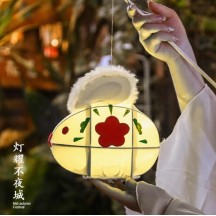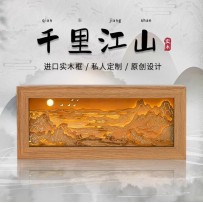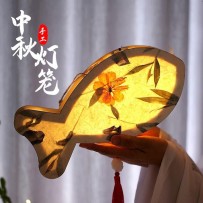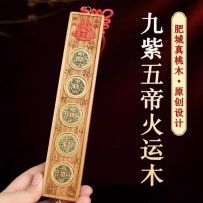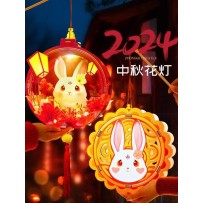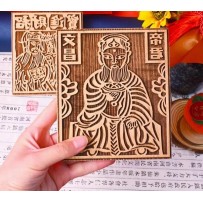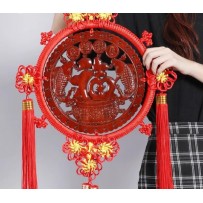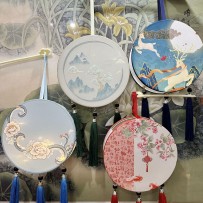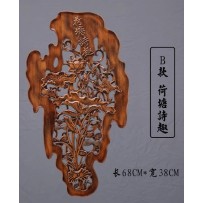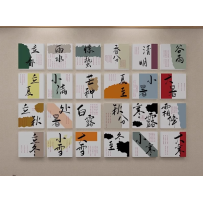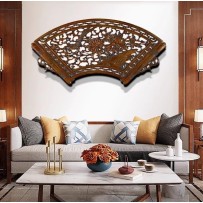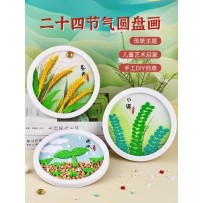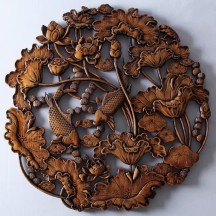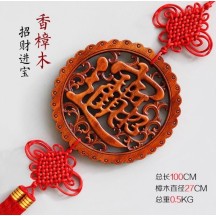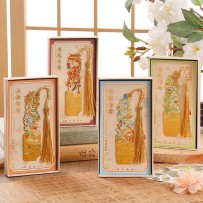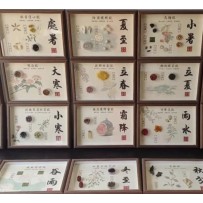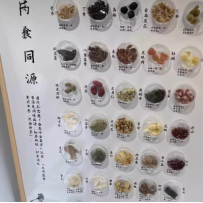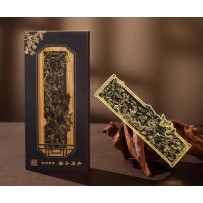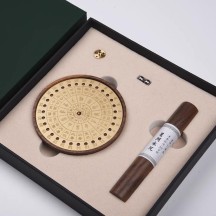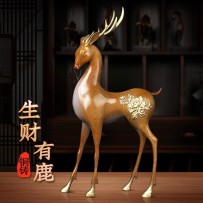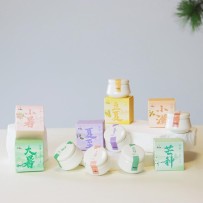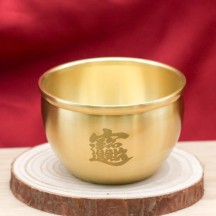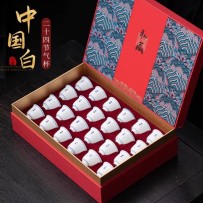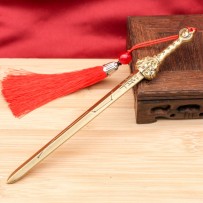The chubby little rabbit is cute and exquisite, with a beautiful meaning, and it symbolizes wishing a happy Mid-Autumn Festival.
Subcategories
Design inspiration: Mainly derived from the silk painting "A Thousand Miles of Rivers and Mountains" by Wang Ximeng of the Northern Song Dynasty. This renowned painting, with its grand scenes, delicate brushstrokes and brilliant colors, depicts continuous mountains, vast rivers, lush forests and scattered pavilions and terraces, presenting the magnificence and beauty of the mountains and rivers during the Northern Song Dynasty. The 3D stereoscopic light and shadow wood Carving lamp of "Thousand Miles of Rivers and Mountains" is based on this model. It aims to recreate the landscape artistic conception in paintings through the forms of wood carving and light and shadow, allowing people to appreciate the charm of ancient art in modern life.
The Nine Purple Li Fire Cycle: It is a concept in numerology. Ancient people divided 20 years into one cycle, and the period from 2024 to 2043 belongs to the Lower Yuan Nine Cycles. The nine cycles correspond to the Li hexagram in the I Ching's Eight Trigrams and are called the "Nine Purple Li Fire Cycle". During this period, all the phenomena of all things that conform to the element of Li Fire will emerge accordingly.The Five Emperors' Coins: Usually composed of copper coins cast by the five emperors of the prosperous Qing Dynasty, namely Shunzhi, Kangxi, Yongzheng, Qianlong and Jiaqing, they carry the energy of prosperity and are unique cultural symbols. In feng shui theory, they have the effects of promoting wealth, warding off evil energy and praying for good fortune.
The Aoyu Lantern is also called the Dragon Fish Lantern. It is a dragon head and fish body in Chinese mythology, which symbolizes good luck.
Jia Ma, also known as "paper horse" or "divine paper", is an ancient and mysterious folk woodblock print used in folk sacrificial activities to pray for blessings and eliminate disasters. It is popular throughout Yunnan Province. Among them, the Bai ethnic group's Jia Ma is the most distinctive. It is a kind of woodcut work that still exists among the common people in the primitive witchcraft and etiquette of the Bai ethnic group.It is a comprehensive reflection of Dali woodcarving techniques, printing techniques and papermaking techniques on primitive religious sacrificial items. It is a precious cultural heritage and has been included in the third batch of intangible cultural heritage list of Dali Prefecture.
Dongyang woodcarving is renowned for its exquisite carving craftsmanship. Artisans employ a variety of carving techniques, such as relief carving, through carving, and round carving, to vividly present various patterns on camphor wood boards. The lines are smooth and the layers are distinct, demonstrating an extremely high artistic standard.
The Chinese knot symbolizes unity, beauty, happiness and peace, and has meanings such as reunion, completeness and good fortune. Dongyang woodcarving has a long history. The patterns carved on it often contain rich cultural significance, endowing the pendants and ornaments with a deeper cultural background and expressing people's yearning for a better life.
Dongyang woodcarving mainly features flat relief, and is characterized by multi-layered relief and scattered perspective composition. Carvers employ techniques such as thin relief, low relief, deep relief, high relief, and multi-layer layering to create works that are rich in layers yet dynamic, with smooth and natural lines, enabling them to vividly present various patterns on camphor wood.
Dongyang woodcarving mainly features flat relief, and is characterized by multi-layered relief and scattered perspective composition. Carvers employ techniques such as thin relief, low relief, deep relief, high relief, and multi-layer layering to create works that are rich in layers yet dynamic, with smooth and natural lines, enabling them to vividly present various patterns on camphor wood.
Dongyang woodcarving mainly features flat relief, and is characterized by multi-layered relief and scattered perspective composition. Carvers employ techniques such as thin relief, low relief, deep relief, high relief, and multi-layer layering to create works that are rich in layers yet dynamic, with smooth and natural lines, enabling them to vividly present various patterns on camphor wood.
Dongyang woodcarving mainly features flat relief, and is characterized by multi-layered relief and scattered perspective composition. Carvers employ techniques such as thin relief, low relief, deep relief, high relief, and multi-layer layering to create works that are rich in layers yet dynamic, with smooth and natural lines, enabling them to vividly present various patterns on camphor wood.
Dongyang woodcarving mainly features flat relief, and is characterized by multi-layered relief and scattered perspective composition. Carvers employ techniques such as thin relief, low relief, deep relief, high relief, and multi-layer layering to create works that are rich in layers yet dynamic, with smooth and natural lines, enabling them to vividly present various patterns on camphor wood.
Dongyang woodcarving mainly features flat relief, and is characterized by multi-layered relief and scattered perspective composition. Carvers employ techniques such as thin relief, low relief, deep relief, high relief, and multi-layer layering to create works that are rich in layers yet dynamic, with smooth and natural lines, enabling them to vividly present various patterns on camphor wood.
Deer are noble, elegant, gentle and mysterious animals with upright postures.They are a good choice for displaying at home or giving as gifts.
Because of its legendary meaning of attracting wealth and its function of receiving money, the cornucopia is listed as an important Feng Shui ornament for attracting wealth, along with the "golden toad" and "lucky cat". In China, especially among the Han people in the south of the Yangtze River, the cornucopia is a treasure for guarding the house.
Since ancient times, Taoists have used the "QiXing Sword" as a magical instrument for rituals, and even as a treasure to guard their sects. At that time, Buddhism and Taoism were both powerful, and both advocated the rise of martial arts. Therefore, Buddhism and Taoism greatly promoted the vigorous development of Chinese martial arts.











